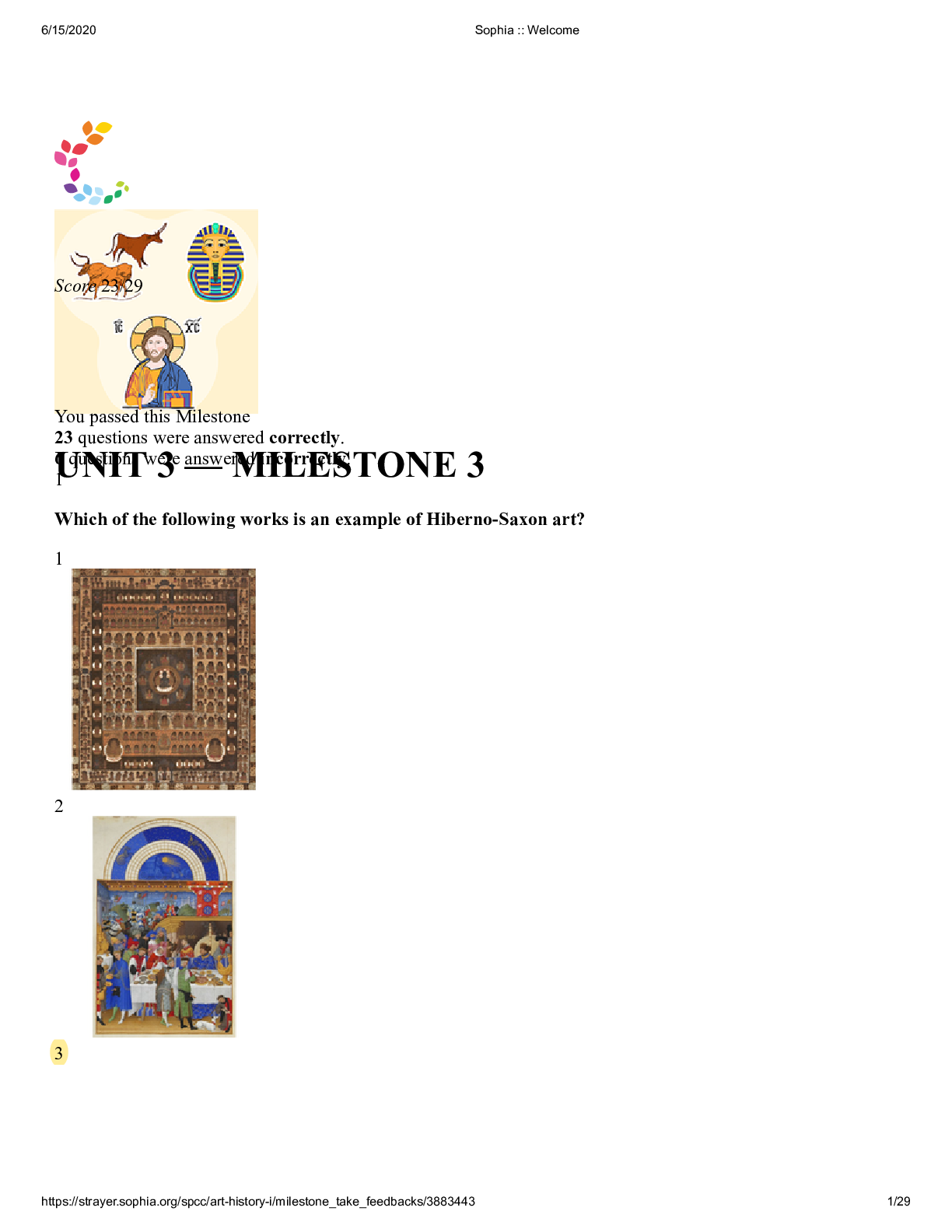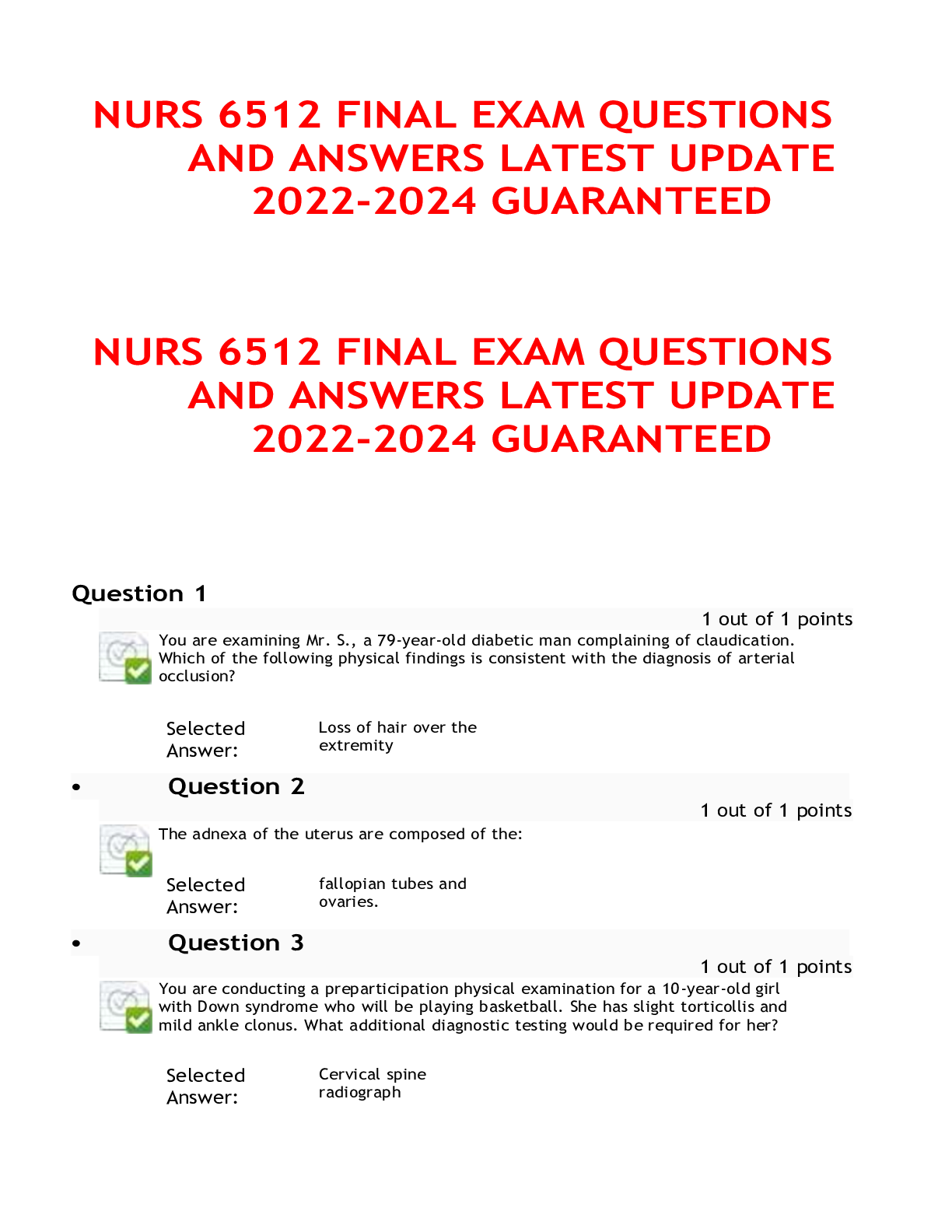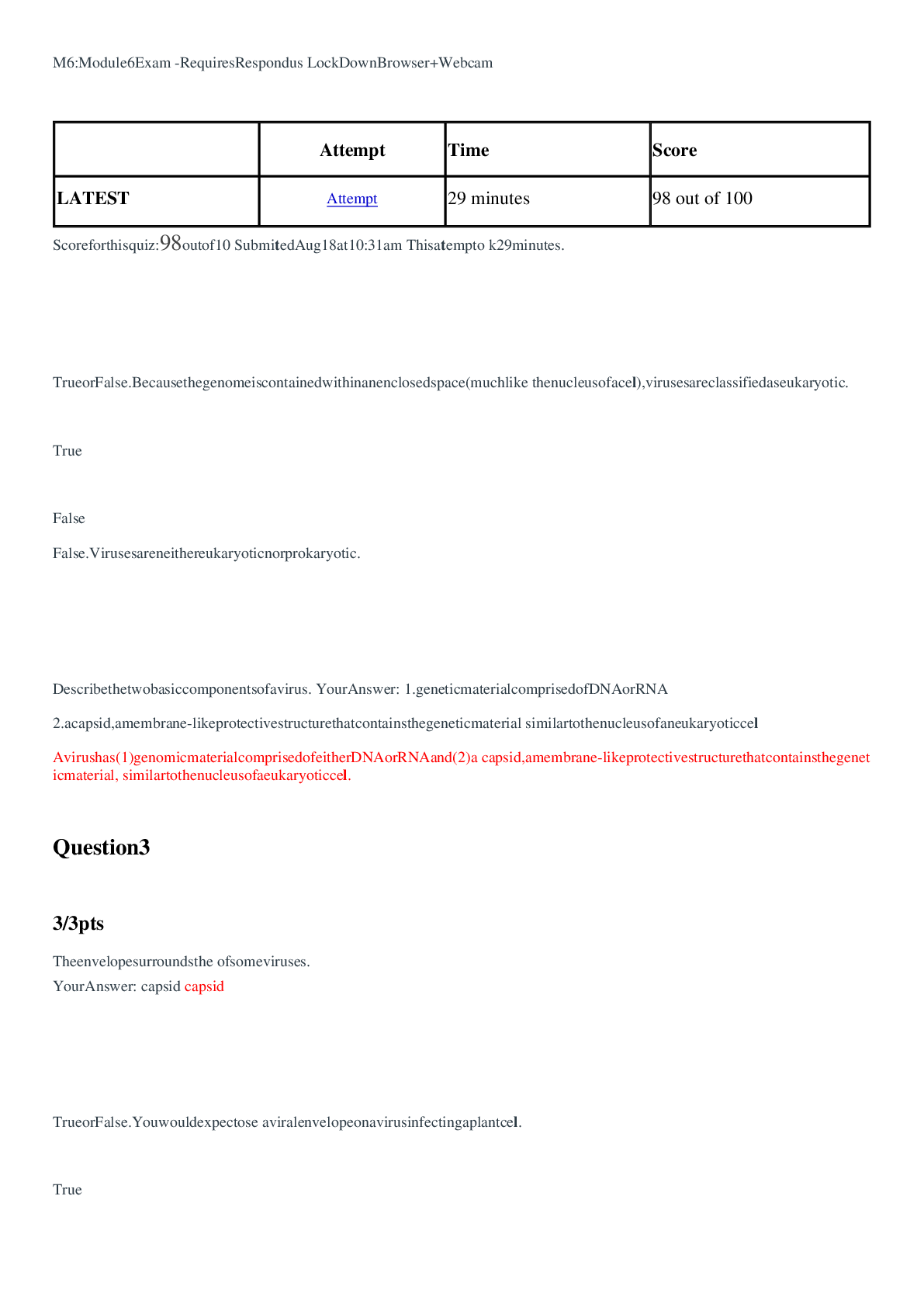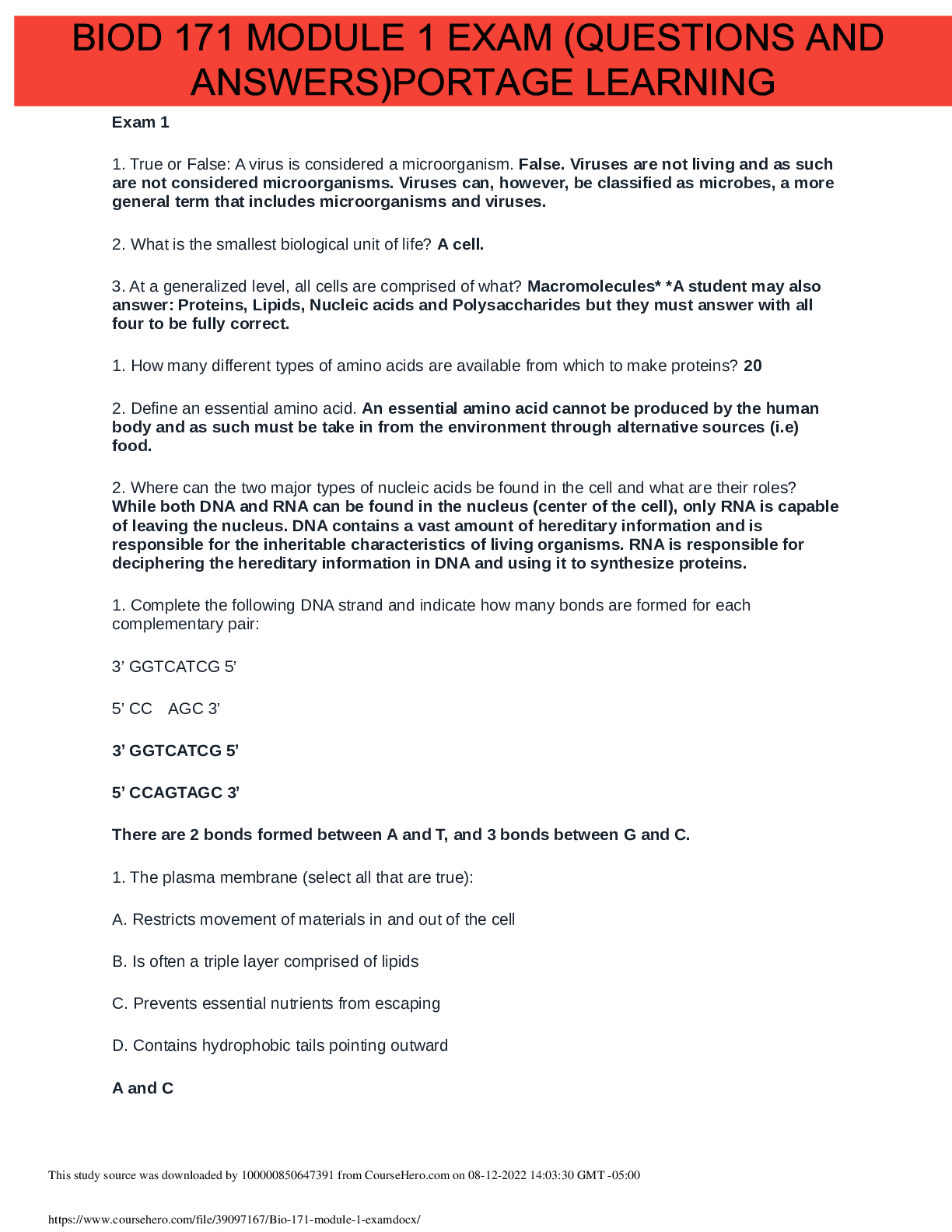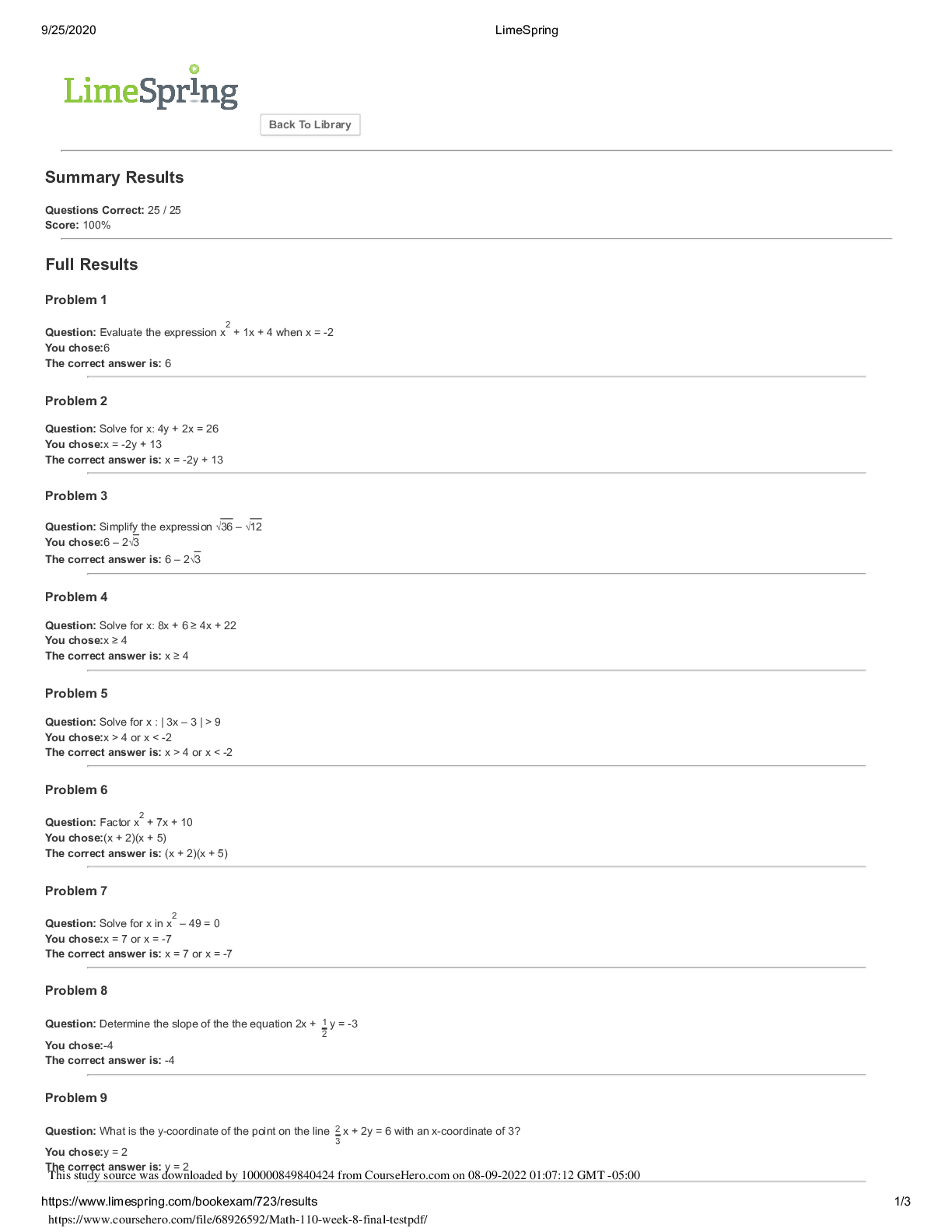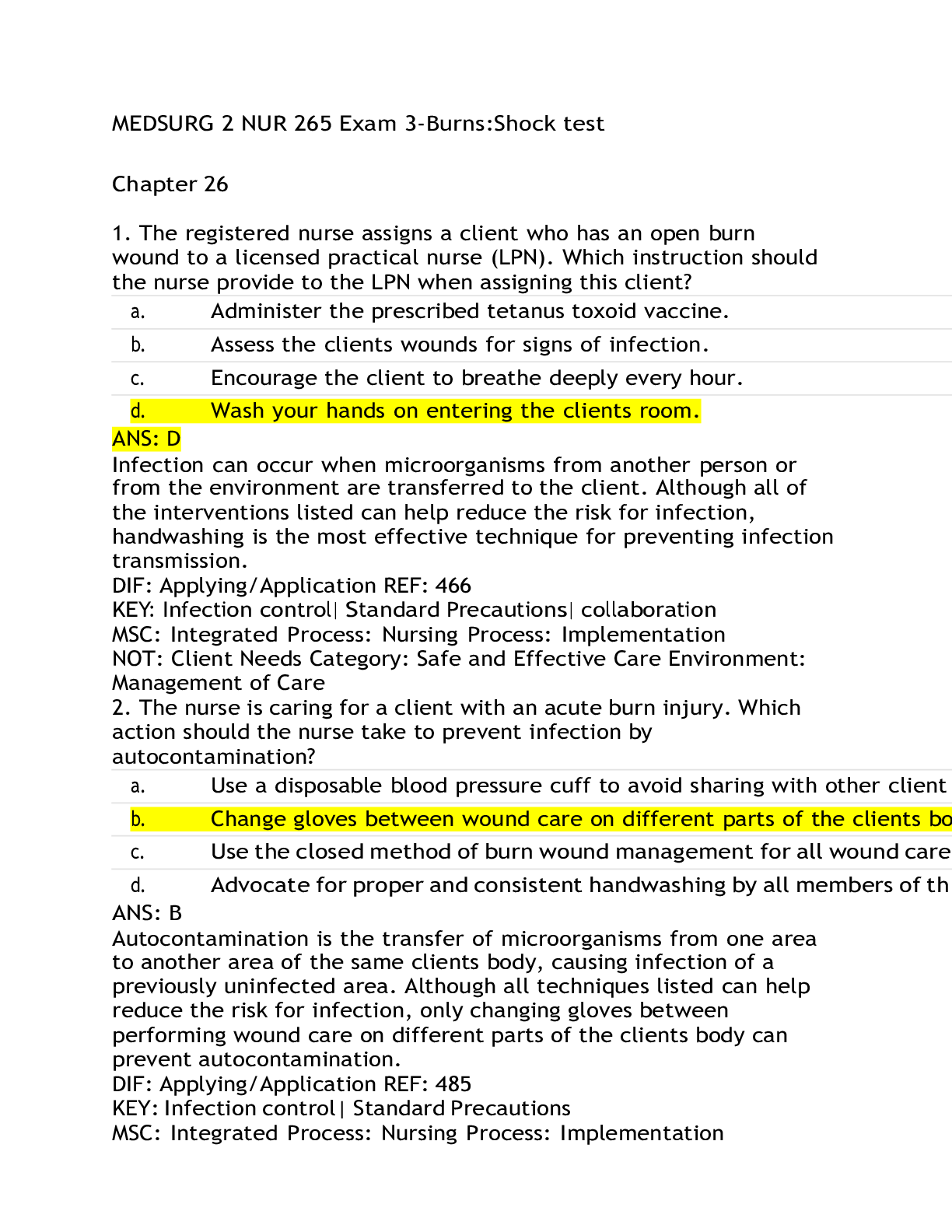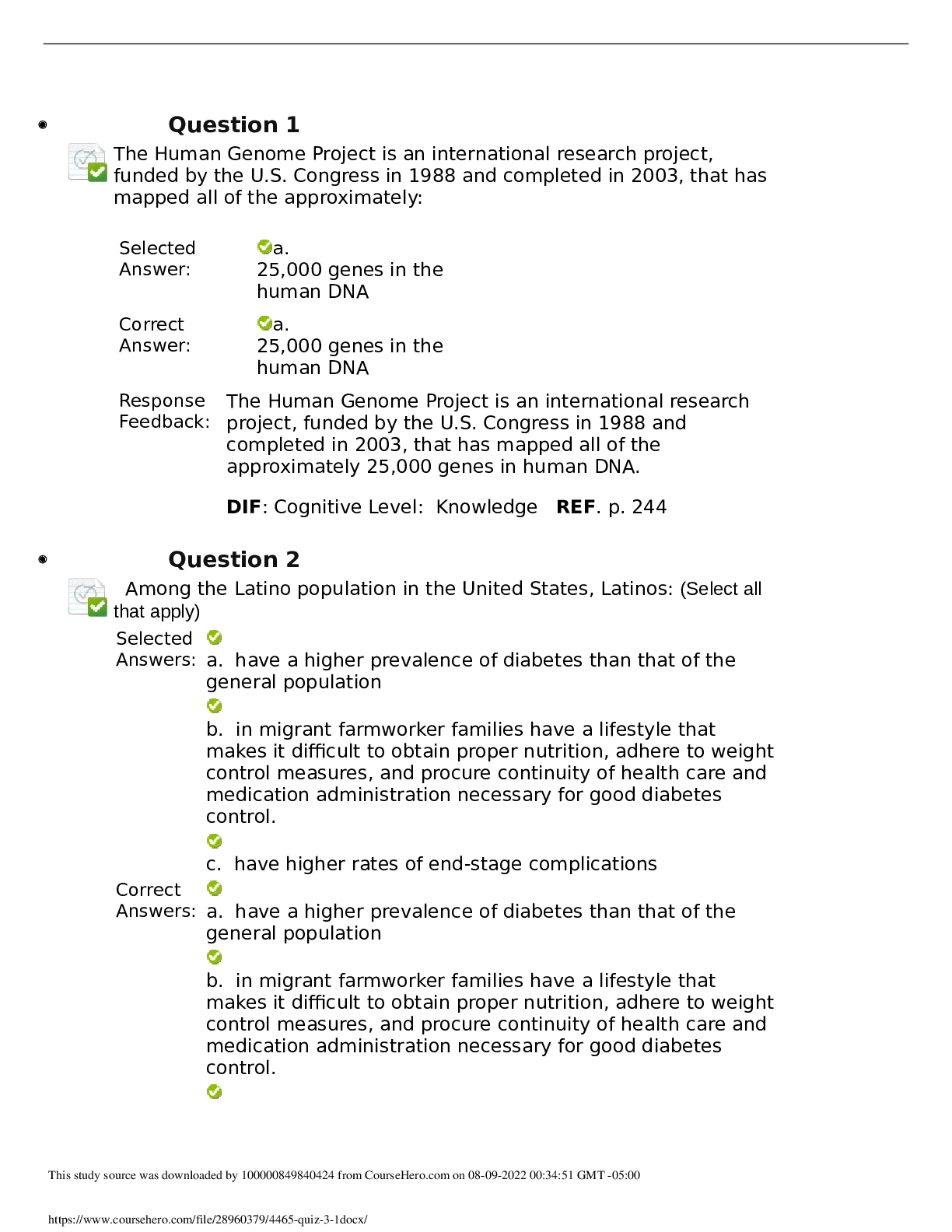Psychology > EXAM > PSY 7712 Unit 2 Quiz (GRADED A) Questions and Answers- Capella University (All)
PSY 7712 Unit 2 Quiz (GRADED A) Questions and Answers- Capella University
Document Content and Description Below
1. A behavior that produces corresponding modifications or co-variations in other adaptive, untrained behaviors is a(n) . a Behavior cusp. . b Critical . behavior. c Initiating . beha... vior. d Pivotal . behavior. QUESTION 2 1. A descriptive and temporally sequenced account of behavior in the natural environment is called a(n): a Anecdotal . observation. b Behavioral . assessment. c Ecological . assessment. d Real time . observation. QUESTION 3 1. A good behavior definition includes: a What the behavior may not include (for example, does not include . spitting in the sink). b An operational description of the behavior. . c Feelings about the behavior. . d Both A and B. . e None of the above. . QUESTION 4 1. A(n) behavior is a behavior that produces indirect benefits to clients by potentially increasing opportunities for participation in other environments. a Access. . b Cusp. . c Key. . d Invitatio . n. QUESTION 5 1. A(n) definition designates responses in terms of their effect on the environment. a Observable. . b Function- . based. c Topography- . based. d Ecological. . QUESTION 6 1. A(n) definition refers to the form of the behavior, whereas a(n) definition refers to the effects of the behavior on the environment. a Contingency, . antecedent. b Function-based, . topographical. c Objective, subjective. . d Topographical, function- . based. QUESTION 7 1. All of the following are assessment methods used in applied behavior analysis except: a Direct . observation. b Interview. . c Medical . evaluations. d Checklists. . QUESTION 8 1. All of the following are competencies of a behavior analyst except: a Knowledge of socially significant behavior. . b Technical skills. . c Ability to conduct statistical analysis of data. . d Ability to match assessment data with . intervention strategies. QUESTION 9 1. An anecdotal observation is a form of direct, continuous observation of all behaviors of interest and the environmental conditions. a True . . b Fals . e. QUESTION 10 1. Behavior assessment seeks to determine the of a behavior. a Function. . b Replacem . ent. c Importanc . e. d Structure. . QUESTION 11 1. Behavior that exposes an individual to new contingencies, reinforcers, and stimulus controls is called: a Pivotal behavior. . b Access behavior. . c Behavior cusp. . d Contingent . behavior. QUESTION 12 1. Behaviors have if they affect a person's life in a positive and meaningful manner. a Social validity. . b Functional . application. c Observable . benefit. d Normalized . outcomes. QUESTION 13 1. Behaviors targeted for assessment must be socially significant. Which dimension of ABA is most related? a Technological. . b Conceptually . systematic. c Effective. . d Applied. . QUESTION 14 1. Explicit behavior definitions are important in research of applied behavior analysis for all of the following except: a Replication by other scientists. . b Accurate and reliable measurement of . behavior. c Comparison of data across studies. . d Agreement between assessment and . intervention data. QUESTION 15 1. Improving academic grades is not a good target behavior because academic grades: a Are not a socially valid outcome. . b Do not specify the behaviors required to . achieve the goal. c Are too complex an outcome for behavior . analysis. d Have poorly defined performance criteria. . QUESTION 16 1. In determining the likelihood of success in changing a behavior, all of the following should be considered except: a Research on changing this . behavior. b Experience of the behavior . analyst. c Social validity of the . behavior. d Available resources. . QUESTION 17 1. Interview questions should avoid why questions because these tend to encourage explanations of behavior. a Defensiv . e. b Mentalist . ic. c Lengthy. . d Direct. . QUESTION 18 1. Juan is a six-year-old boy with a developmental disability who attends an integrated kindergarten class. Assessments have identified four target behaviors. Which behavior should be the first target for intervention? a Flicking his fingers in front of . his eyes. b Bolting from the playground. . c Toilet training. . d Humming loudly during group . time. QUESTION 19 1. One method of priority ranking various potential target behaviors is to: a Use a ranking matrix. . b Use a standardized . test. c Interview significant . others. d Use a behavioral . assessment. QUESTION 20 1. One of the fundamental questions to answer before initiating behavioral assessment is: a Who will conduct the assessment? . b Where will observations be conducted? . c What is the nature of the problem behavior? . d Who has the authority and skill to intervene with . the behavior? QUESTION 21 1. Outcome criteria should be established before intervention commences for all of the following reasons except: a To establish the target performance level. . b To know when to terminate intervention. . c To ensure accurate data collection. . d To ensure agreement on outcomes among . stakeholders. QUESTION 22 1. Potential target behaviors should not be selected if the primary reason for selection is the: a Benefit of others. . b Safety of the person. . c Safety of family members. . d Potential to increase . independence. QUESTION 23 1. The of behavior rule states that a target behavior should only be selected when it can be determined that the behavior will produce natural reinforcement. a Functionali . ty. b Validity. . c Relevance. . d Importanc . e. QUESTION 24 1. The belief that individuals with disabilities should be physically and socially integrated into society to the maximum extent possible is called habilitation. a True . . b Fals . e. QUESTION 25 1. The preferred method of behavioral assessment to determine which behaviors to target for change is . a Ecological . assessment. b Interviews. . c Checklists. . d ABC recording. . QUESTION 26 1. The principle of determines the degree to which a person's behavior repertoire maximizes short- and long-term reinforcers for that individual and for others, and minimizes short- and long-term punishers. a Normalizati . on. b Habilitation . . c Functionalit . y. d Justification . . QUESTION 27 1. The progression of behavioral assessment can be conceptualized as a shape. a Circular . . b Funnel. . c Linear. . d Comple . x. QUESTION 28 1. When a problem behavior has been targeted for reduction or elimination, the behavior analyst must always include a(n) in the intervention plan. a Replacement . behavior. b Appropriate . response. c Pivotal behavior. . d Performance . criterion. QUESTION 29 1. When interviewing a significant other about a client's behavior, the behavior analyst should ask variations of all of the following types of questions except: a What . ? b How? . c Why? . d Whe . n? QUESTION 30 1. When prioritizing behaviors for change, a chronic behavior when compared to a more recently acquired behavior. a Is easier to change. . b Takes precedence. . c Is less important. . d Requires less . intervention. [Show More]
Last updated: 1 year ago
Preview 1 out of 13 pages
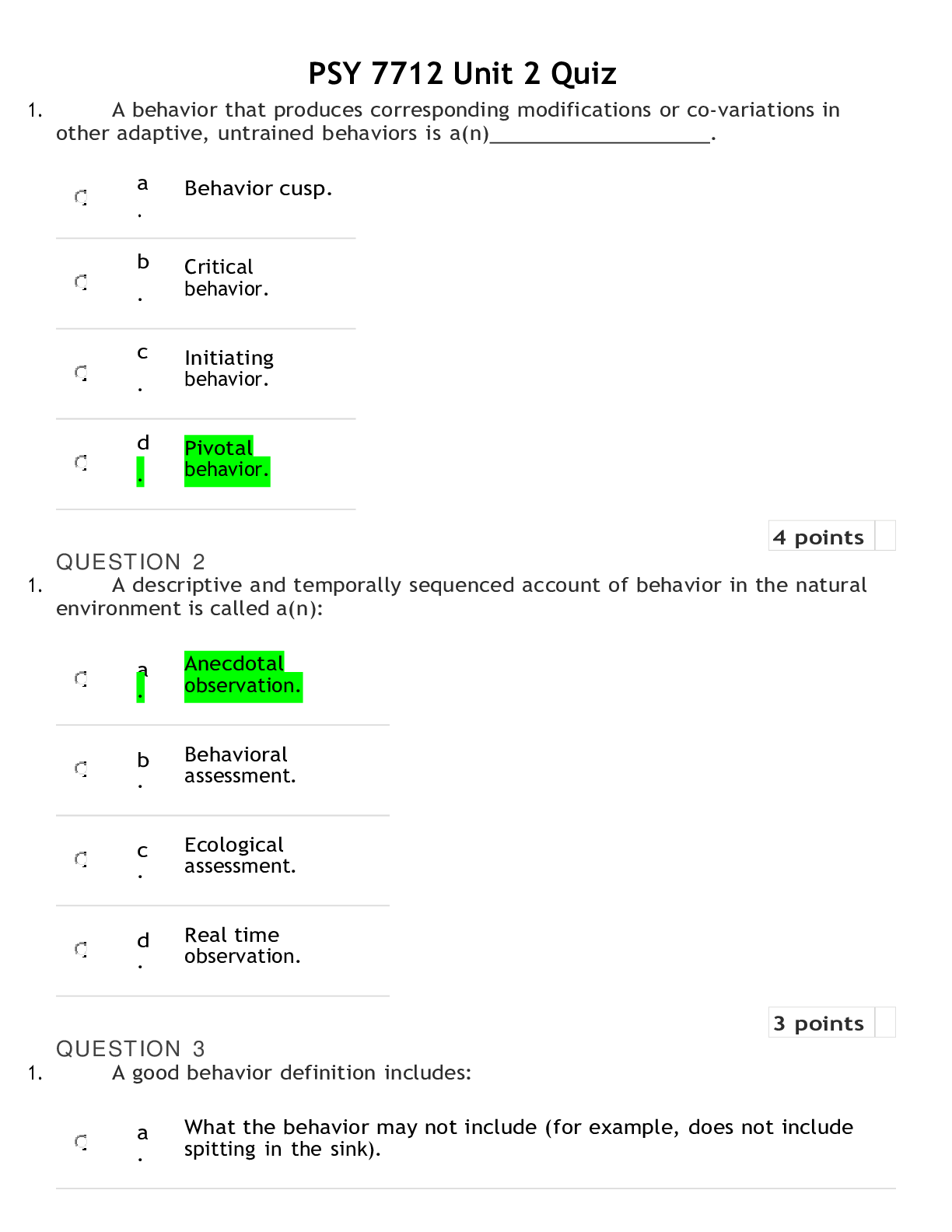
Reviews( 0 )
Document information
Connected school, study & course
About the document
Uploaded On
Aug 08, 2022
Number of pages
13
Written in
Additional information
This document has been written for:
Uploaded
Aug 08, 2022
Downloads
0
Views
46






.png)










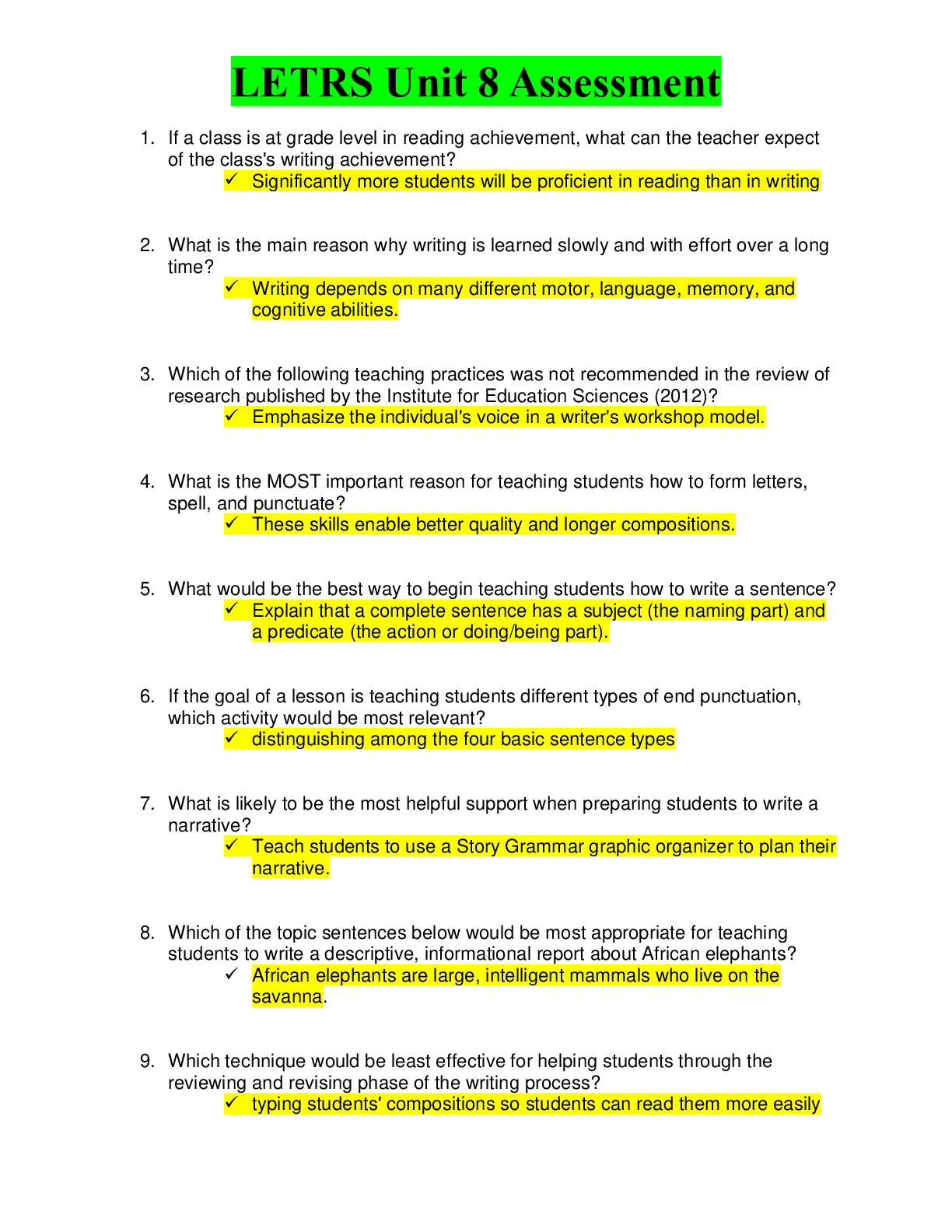
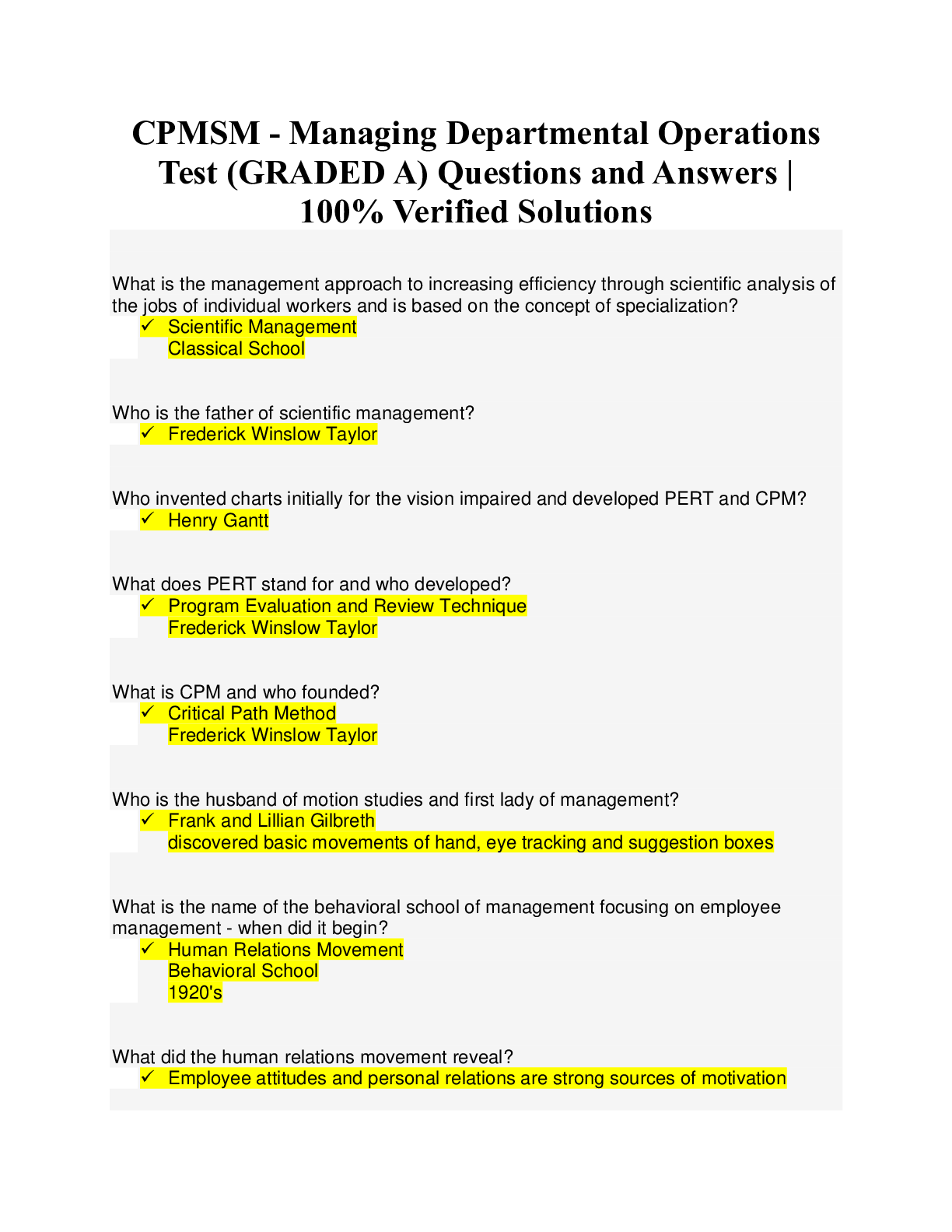
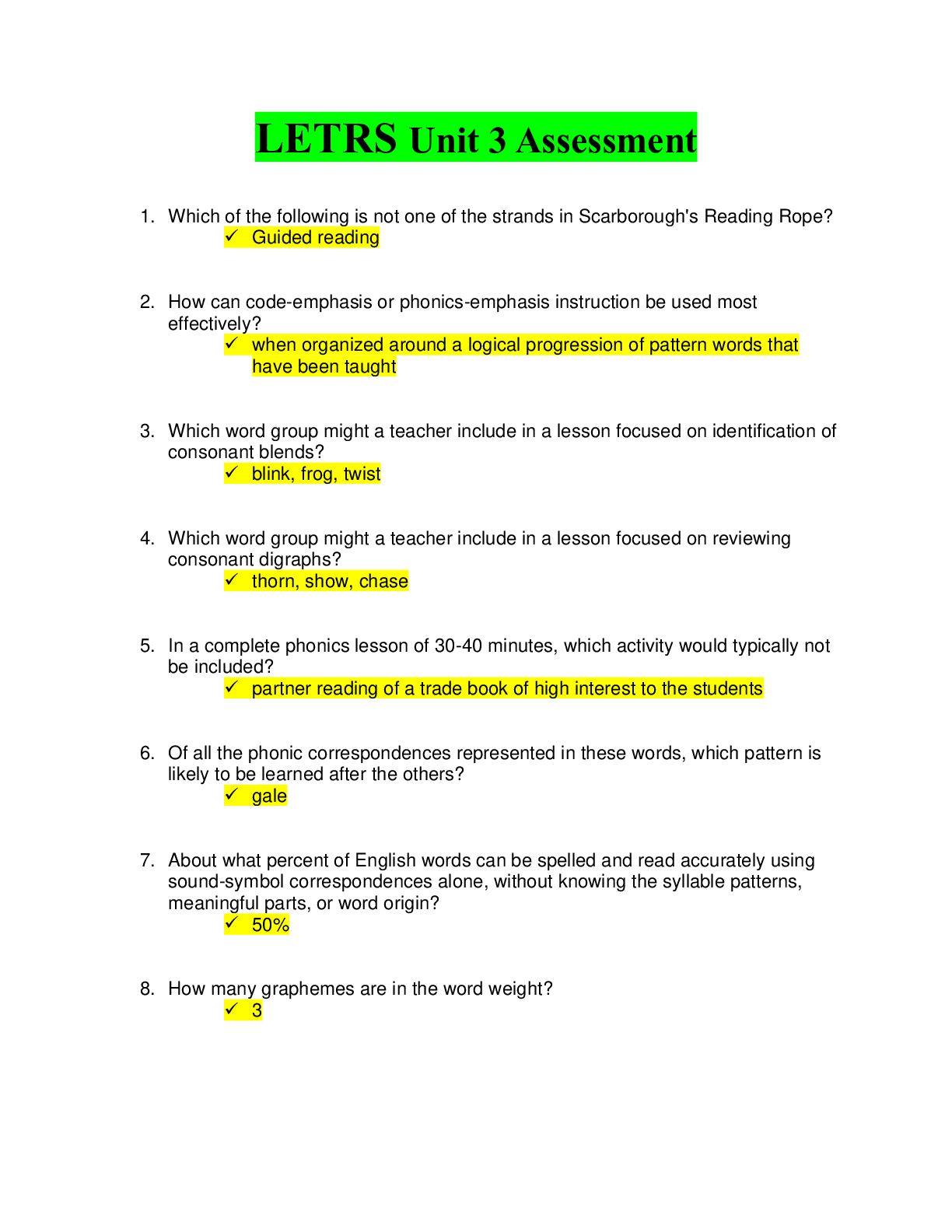

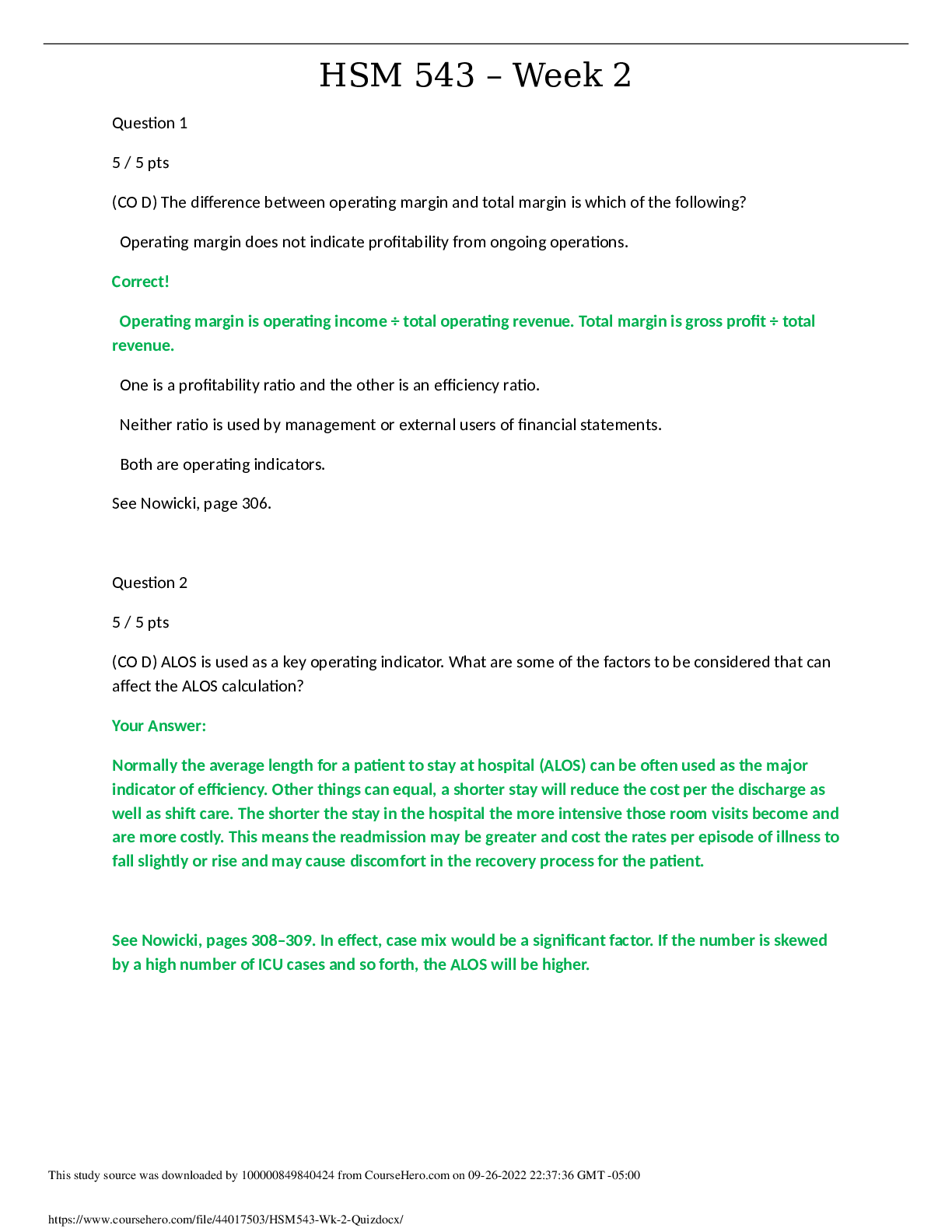
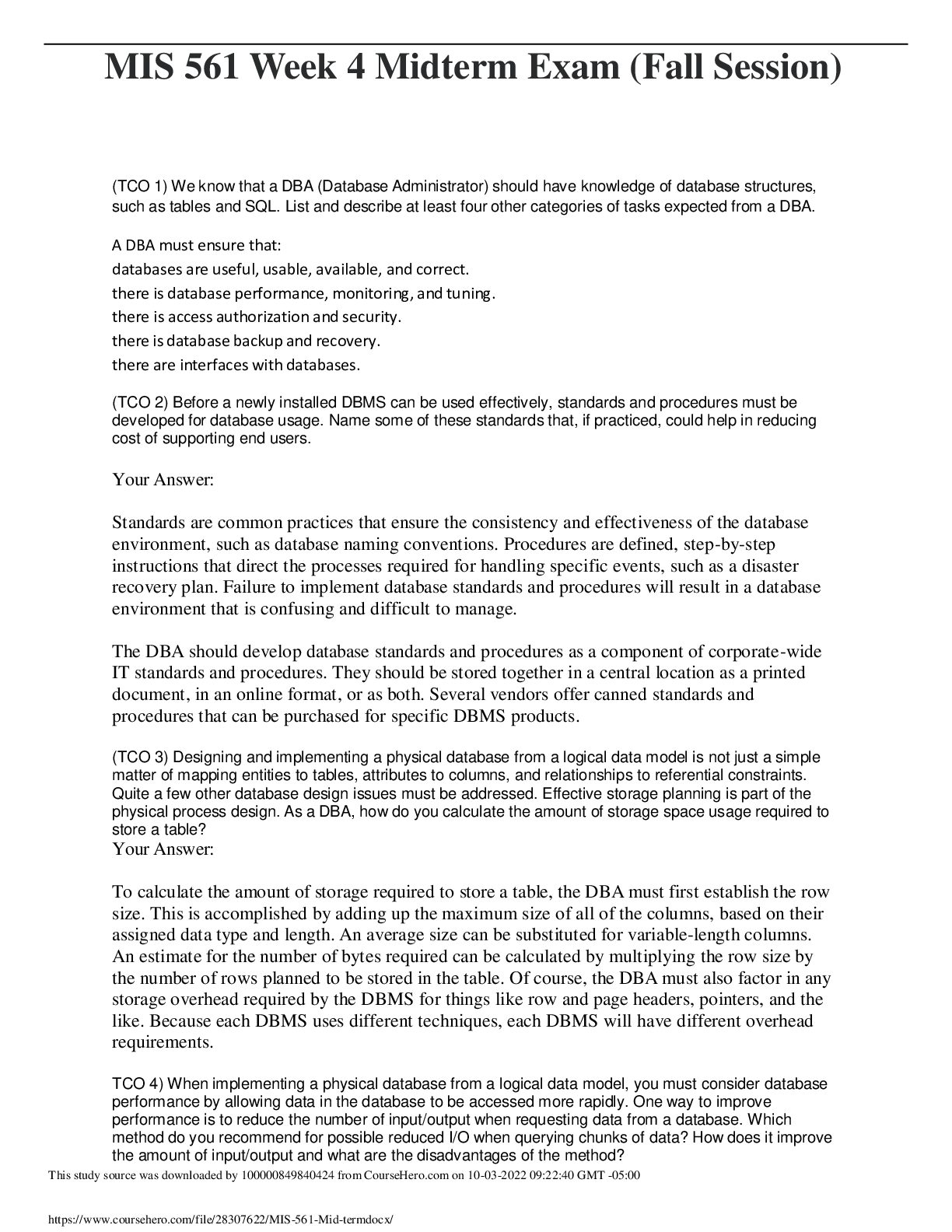
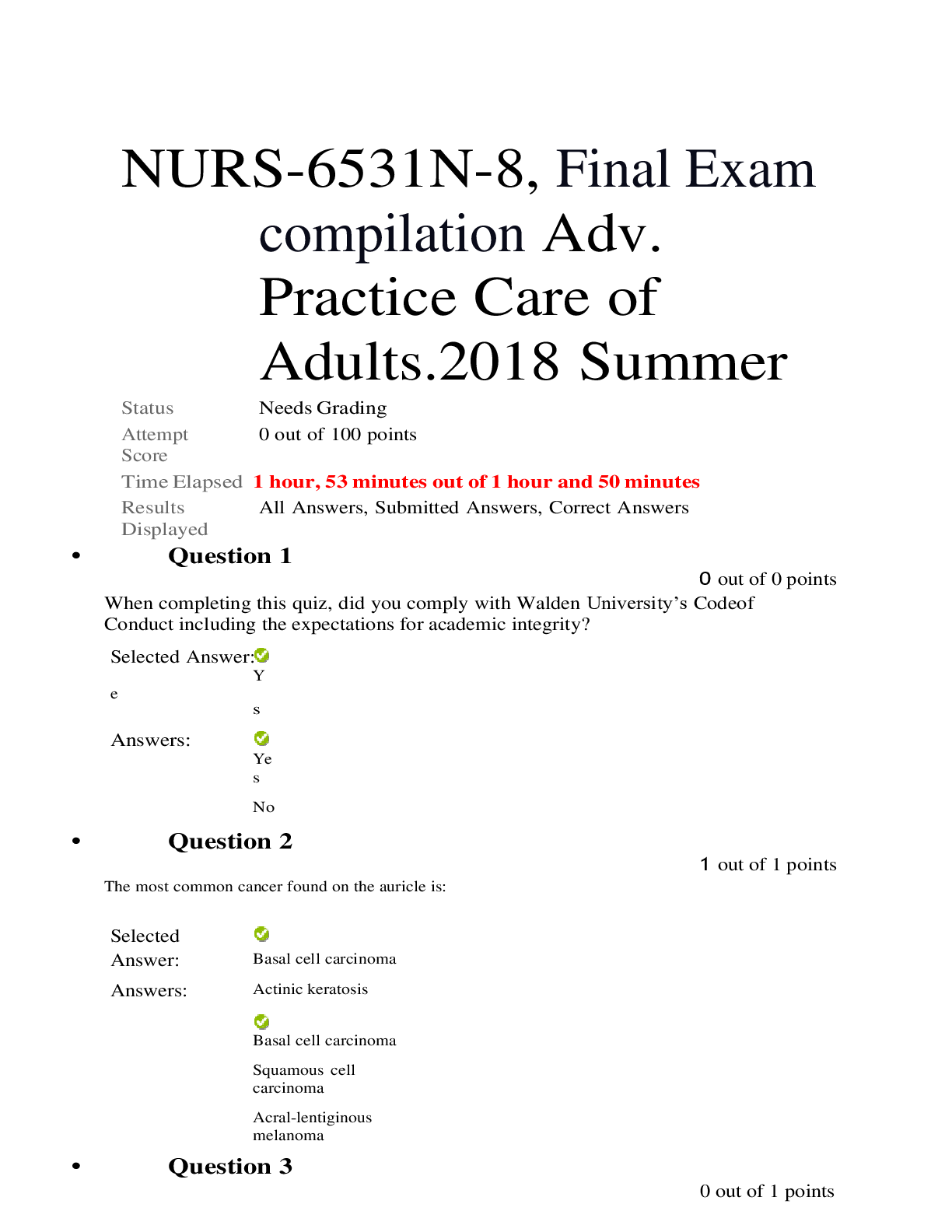
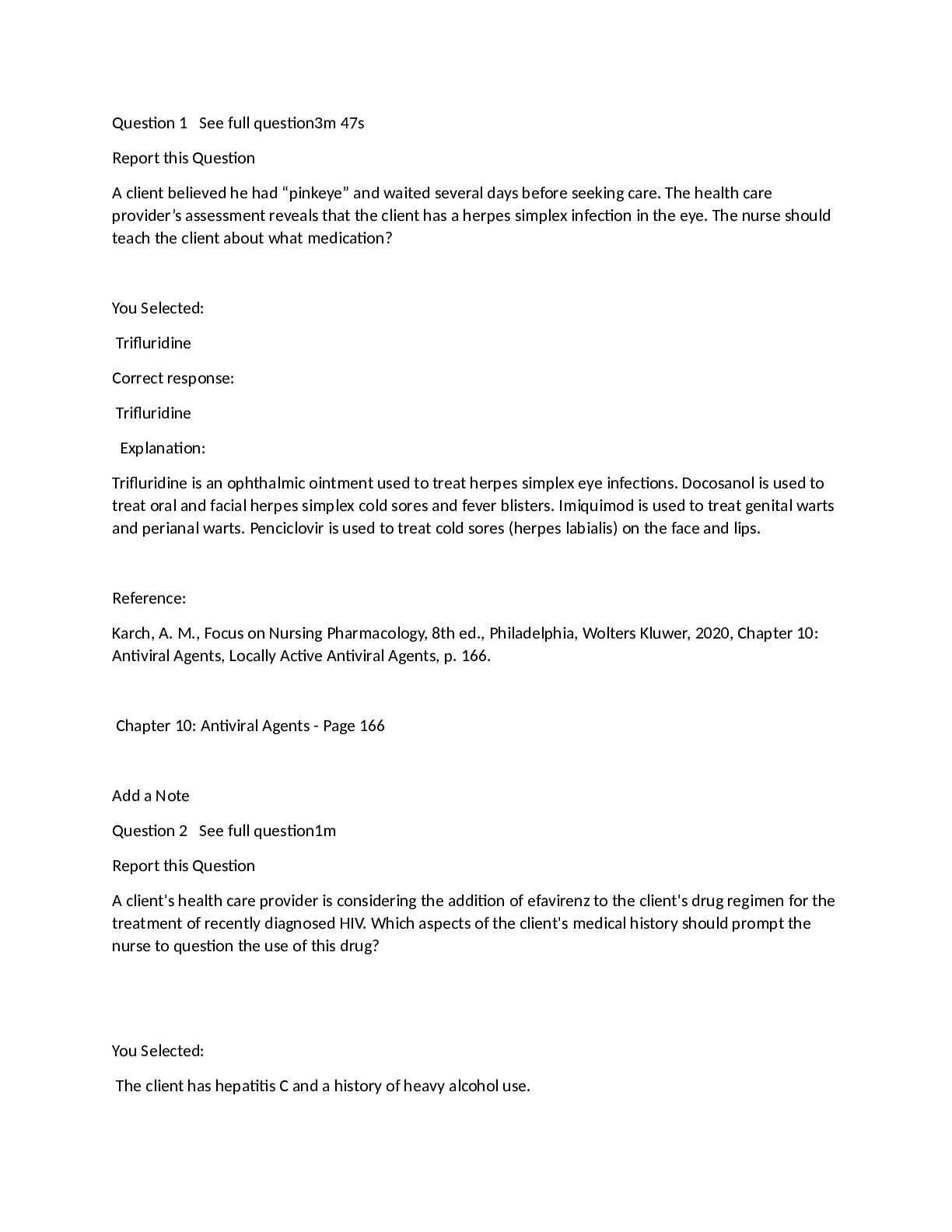

 (1).png)
